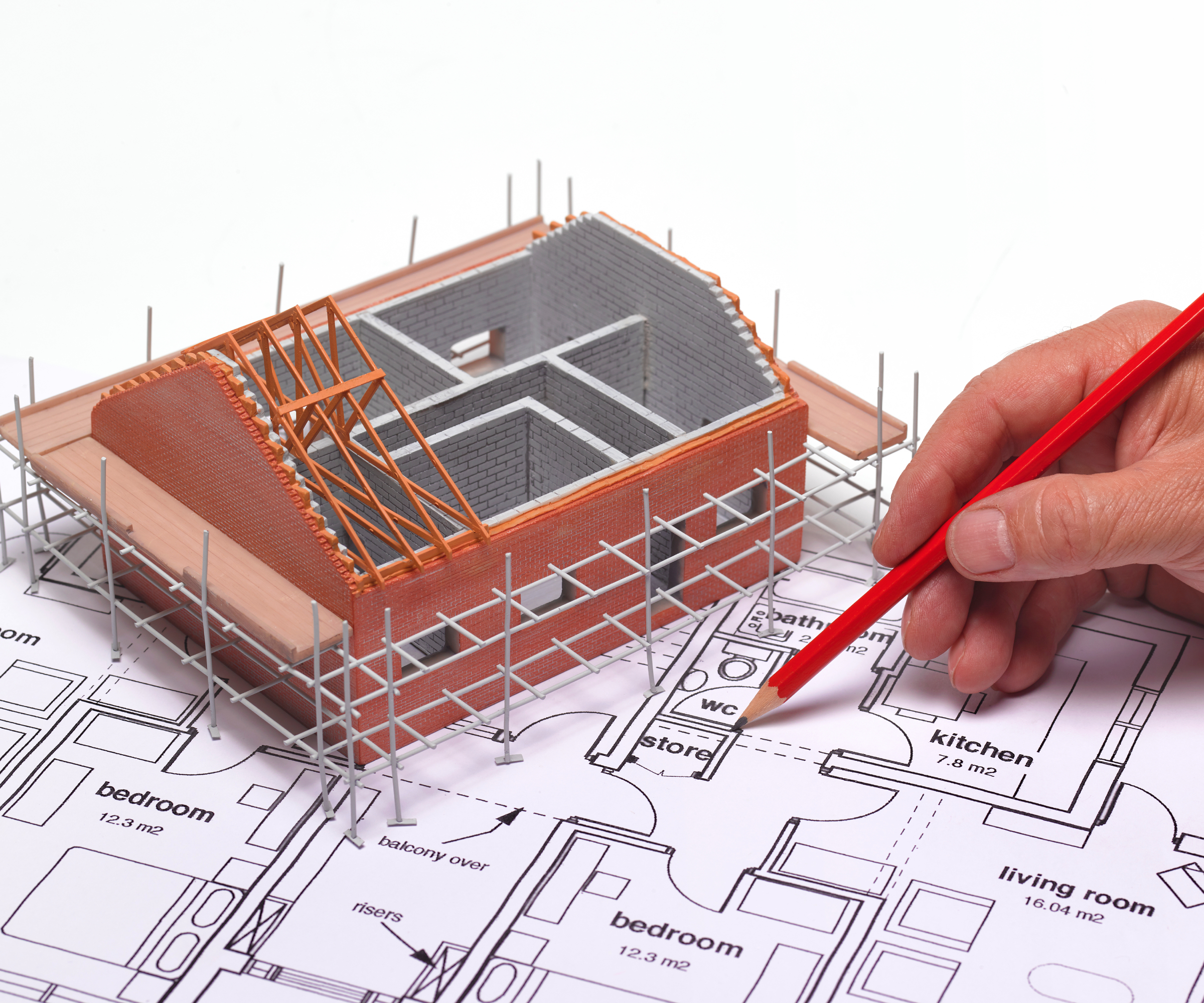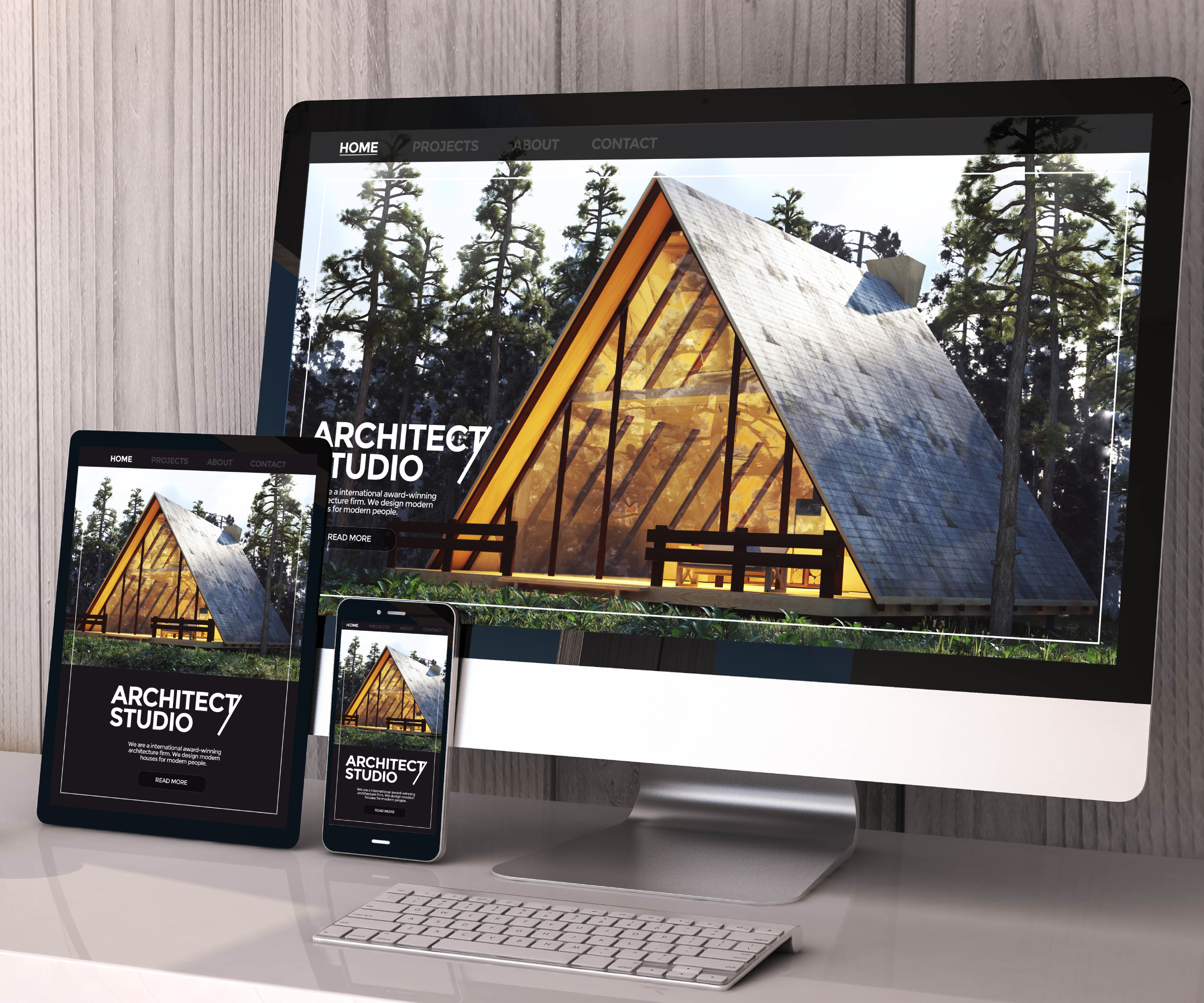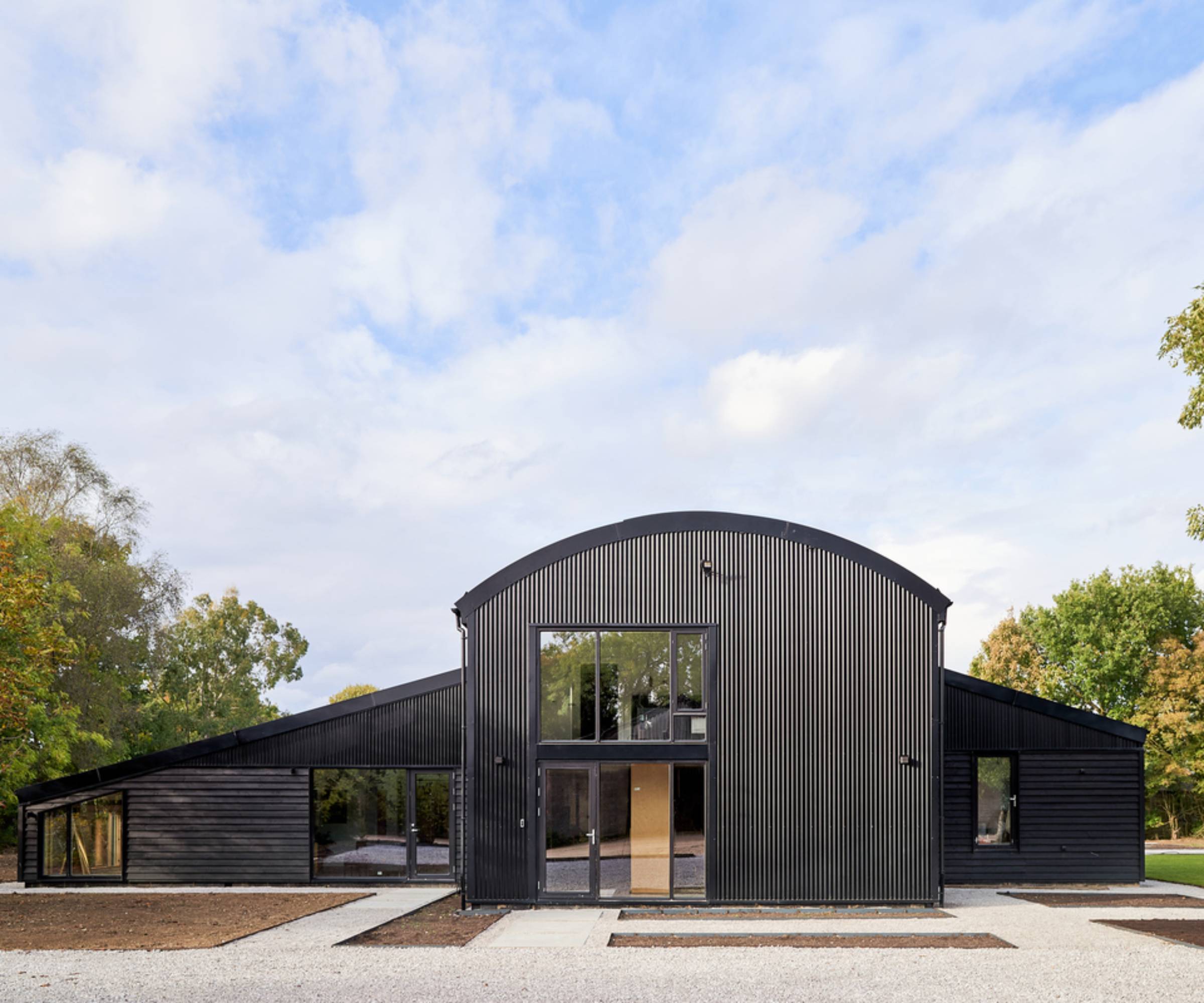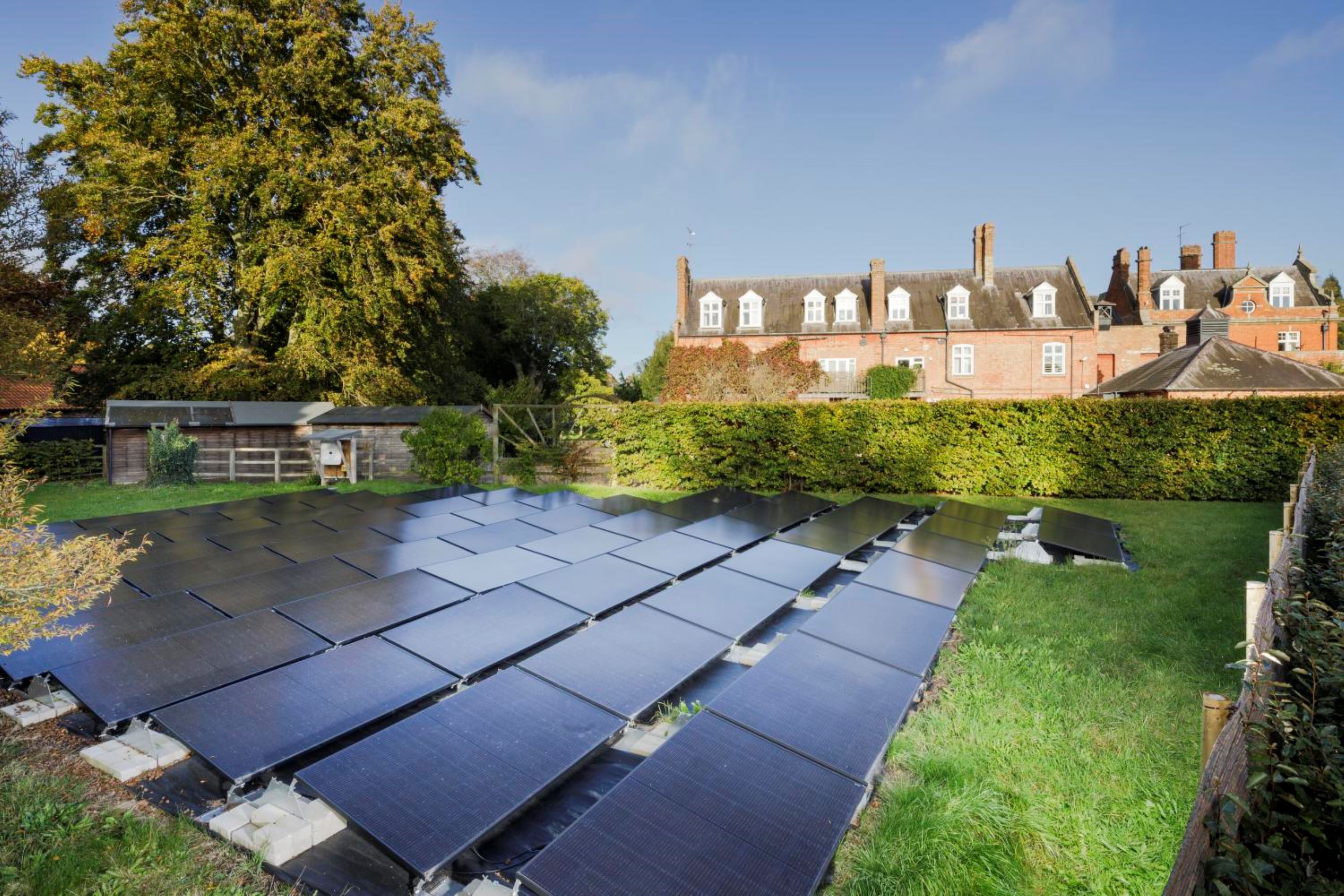How to choose an architect for your self build, extension or renovation
Finding the right architect is essential when you're hoping to turn your dream home into a reality. Here's our advice on how to find, and choose, the best one

Embarking on a self build, extension or renovation project normally requires hiring the services of a number of different professionals, with an architect normally the main starting point. But how do you choose an architect for the job when there's so many choices out there?
With architect's fees forming a significant part of your budget, getting it wrong is a mistake you'd rather avoid. And while making sure they have the right knowledge and expertise is key, your choice will also need to be based on whether you feel you have a connection and can develop a good working relationship.
To help you find the right match, we’ve pulled together five golden rules to follow when you need to find an architect.

1. Create a brief before you start your search
Before you even begin approaching architects, you need to be thinking about design briefs and getting one in place. It doesn't need to be a fully comprehensive list of everything you're hoping to achieve, but a good architect will be keen to know exactly what you’re after so they can also determine whether they are interested in taking the project on too.
How much you include in your brief will of course depend on the nature of your project, but if looking at a self build for example, start with the basics such as the number of bedrooms and bathrooms you want to have, do you prefer a modern or more traditional look, will you need an open plan scheme or do you plan on having individual reception rooms.
Don't be afraid to collate your design inspiration onto a mood board or use a tool like Pinterest and create boards for your dream home. It will all help your potential architect get an insight into your vision.
2. Research, research, research
When starting the process of finding an architect, the best piece of advice I can personally offer is to never underestimate the power of research, particularly if you're looking for something specific.
The first starting point I used when trying to find an architect for my Grand Designs project was to head straight to RIBA (The Royal Institute of British Architects) to use their useful Find an Architect tool.
As I was working on a listed building, and was harbouring visions of a potentially controversial contemporary extension, choosing the right architect was imperative. It needed to be someone with experience in that field, and ideally someone who had a relationship with CADW, the body who manage listed buildings in Wales.
That said, if your project is less demanding, word of mouth can also be a great tool at your disposal.
Just as when you set out to find a builder, or anyone else you hire to work on your project – be it carpenters, electricians, plasterers etc – it’s always best if you can source someone who comes recommended by people you know and trust. Ask family, friends and neighbours if they’ve worked with an architect they’d recommend. If there are houses in the area who've had extensions or conversions you like, you could also knock on the door and ask who the architect was.
Or, if driving past plots where self builds are taking place you like the look of, don't forget to check out site boards or ask the team working on site who's responsible for the design.
Failing that, another easy way is to do simple Google search, targeting your local area. Check out social media too – Instagram is teaming with architects and designers showcasing their work, and most local areas have business or community groups on Facebook where you could ask for recommendations.
The benefit of a local architect will also mean they’re familiar with designing homes which suit the vernacular, might be friendly with the local planning authority, and might also be able to go on to recommend local builders who they’ve worked on projects with before.
3. Be selective with your short list
Hopefully, your research will be successful in which case you may find yourself with a list of potential names or practices. However, don't assume you need to see them all. Sometimes it pays to be more selective in the early stages, especially if you aren't entirely sure what you're after, or you could end up confusing yourself even more.
One of the easiest and quickest ways of viewing an architect’s previous work will be via their website and this will also help you narrow down if you want to add them to your shortlist.
A practice’s website will be their main selling tool, and chances are there will be a handful of well-photographed projects for you to browse through. This will give you an indication as to the calibre of work they produce, the architectural style they might specialise in, materials they’re familiar with and the construction systems they’re used to working with.
It is important you like their work and know they can deliver the style of home you’re after. If their website ticks all the boxes, then shortlist them as a favourite. If however you're not sure about a few things, don't be afraid to add them to a secondary list for reconsidering at a later stage if your first choices don't work out.

4. Set up in person meetings to discuss your plans
Your architect is the person you’re trusting to design your dream home. You’ll be investing a lot of money not just in the project but in the design stage itself, and you need to be able to feel you can approach them about anything which is why meeting them all in person is essential when deciding who to choose.
The first initial meeting is important for both parties as it's an opportunity for you to ask questions of each other and to establish whether it feels like you could work together or not.
A breakdown in communication further down the line can have a lasting effect on the whole project, so when choosing your architect make sure that you’re both comfortable.
"The initial consultation is key, it reveals a lot about a client, their personality, and whether we have a natural rapport," agrees Yaniv Peer, director at Iguana Architects. "Beyond that, we assess if they align with the fundamental balance of time, cost, and design. If cost is their primary driver, for example, from our perspective, there may be better-suited architects for their needs. Our focus is on design and long-term value, particularly from a well-being perspective."
Asking the right questions will also play a pivotal part in helping you choose an architect. Prepare a list in advance and make sure you ask them all the same questions so you can accurately compare response. Also take note of how they react to your vision.

When you’re discussing your must-haves and like-to-haves, if they try to steer you away too much from your plans at this stage, you need to think about how much you're prepared to change. Their role as creatives is to develop your brief, but to also make sure they listen to what you want and don’t try to change it – unless it's in line with you wishes.
Many homeowners will usually express their delight that their architect was able to design a home better than they could have imagined; just be careful that things don’t get carried away and you sacrifice certain elements you’ve longed for, all because an impulsive designer went rogue and wanted to try something new.
"Homeowners should focus on two main aspects during the first interview," recommends Yaniv. "These are the level of service they want and or the architect will provide, and the architect’s experience.
"Ultimately, knowing what level of service and engagement you’re paying for is crucial," he explains. "The clarity of information and communication style will directly impact the success of your project."
Yaniv recommends covering these four main areas as a good starting point to help in your quest to find an architect:
- Experience with local authorities – Does the architect understand the nuances of the planning process in that area?
- Scope of involvement – Will they manage the project from start to finish? Will they be hands-on during construction conducting site visits?
- Tender process – Do they handle the tender process, or will that be the client’s responsibility?
- Deliverables – What kind of outputs can you expect? Will they provide visualisations or 3D models to help you understand the design?

Yaniv Peer is a director of Iguana Architects. A practice that places biophilic design and sustainability at the core of its work.
5. Be honest about your budget but don't compare on cost alone
Whether you are building an extension, renovating an old property or self building, designing your home will take up a large chunk of your overall budget – which is why it is so important to get this part right and make sure you’re happy with it.
What you have to remember however, is that, unless you have unlimited funds to throw at the project, you need to be sensible. Be upfront with your architect from the outset and insist they are realistic with you in terms of what can be achieved within your price range.
"Choosing an architect really is such an important task in your project. Almost all larger projects take 1-2 years from the very start to the very end and so making sure you are working with someone who is the right fit is a must," says Melissa Robinson, director at MW Architects.
"You must work with someone who understands your vision for your home, your budget and any time constraints. It’s also really important to know that your architect will be honest if your aspirations and your budget don’t align," she agrees. "We don’t want to design something for someone that they can’t afford to actually build, as that doesn’t help anyone!"
One of Melissa's most important tips when choosing an architect?
"It is really important that if you are comparing architects you are not just doing this on cost alone," she warns. "We have seen time and time again people offering lower fees, but also offering a completely different service. We take the time to tailor our quotes to the clients’ needs and outline what is and isn’t included."
Make sure you are comparing like for like, rather than total costs with no breakdown of what this actually includes.

Melissa Robinson is a director and architect MW Architects and has over 14 years experience in the field. Withcreativity in problem solving and a keen focus on materiality and construction detailing, she ensures realised designs are achieved as intended. Melissa is an active member of the RIBA Small Practice panel advisory group, and is involved in other initiatives encouraging young women into architecture.
FAQs
How do I choose an architect for an extension?
Regardless of the nature of your project, the same process will apply when you choose an architect for an extension. It's about finding the right fit for you, your vision, the build and your budget.
That said, there are also occasions when you may be able to save money if you're undertaking a small extension project, advises Laura Crombie, Homebuilding & Renovating's brand director.
"We decided not to use one on ours, as we were only having a modest infill," explains Laura. "I got a CAD designer to draw up my plans as we needed planning permission due to a change in the front elevation. We used those drawings for permission purposes and found a good builder who was experienced in working at this level of details.
"It definitely saved us a good amount of money," says Laura, "and I’m confident we haven’t lost anything on that particular project by not using one."
Do I need an architect for a loft conversion?
If you're considering loft conversion ideas, it's a specific type of project where you will certainly need an architect, but this doesn't always mean going down the traditional route of using an architect and finding a good builder and structural engineer.
Instead, you could consider engaging the services of a loft conversion specialist, something Homebuilding & Renovating's deputy editor, Teresa Conway is currently in the process of doing.
"For us, the primary concern when choosing who would work on the loft conversion was speed and efficiency; my partner and I both work full time and on top of looking after our son, neither of us had the inclination to start a complex tendering process," says Teresa.
"Our loft conversion is very standard dormer extension, and on top of this, our home is a standard Victorian terraced property, so design-wise, our options were very limited anyway, so we didn't feel the need to source a first-class architect," she explains.
"So, we chose a firm that offers a complete service including architectural drawings, builders, roofers, joiners, plumbers, and electricians. They also handle getting building regs approval.
"Also, as a specialist loft company, they have handled hundreds of similar projects, so they were well-placed to advise on all the project considerations as well as having fixed upfront costs for everything," she adds.
"We have a built-in clause in our contract that there will be a price reduction if they're not finished by a certain date, and having previously done a downstairs extension project which dragged on 6 months longer than anticipated, this feels like a dream come true," says Teresa.
Keen to drill down into more detailed questions you can ask your architect once you've narrowed down your initial selection? Find out what to ask in our advice on ways to assess an architect so you can make sure when you make your final choice, you've covered everything you need to know.
Get the Homebuilding & Renovating Newsletter
Bring your dream home to life with expert advice, how to guides and design inspiration. Sign up for our newsletter and get two free tickets to a Homebuilding & Renovating Show near you.
Claire is Brand Development Editor and the former Editor in Chief of Homebuilding & Renovating website and magazine. She became Editor of Homebuilding & Renovating in 2016 and has been a member of the team for 16 years. An experienced homes journalist, her work has also appeared in titles such as Real Homes and Period Living.
She has a particular interest in green homes and sustainability, and interior design is a passion too; she has undertaken qualifications in this area.
After finishing a major renovation of a period cottage, she is now onto her next project: overhauling a 1930s property in the Shropshire countryside.

